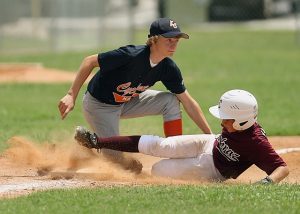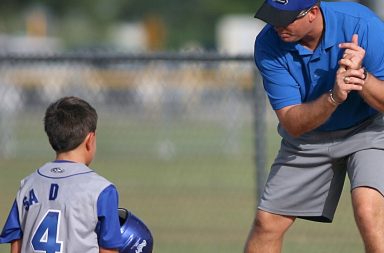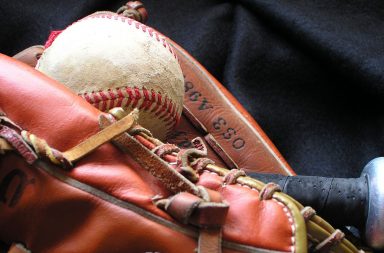This article was written with the goal of helping youth league coaches learn to properly instruct players they coach on the basics of each position.
What is required of the First Baseman?
To be a first baseman, one must for one have an excellent glove, that is capable of catching most anything thrown at or near him. While speed is not the main factor at this position, the fielder in position must still be quick enough to move and react. Bravery is also a very useful trait, since often the player will have to stretch out to make a difficult catch or scoop and still keep the foot on the bag.
That is why, and with good reason, coaches will often try to get a tall, and preferably left handed player sitting at first base. The player should be tall, since the taller, the longer the reach, and thus fewer missed balls due to physical limitations. Left handedness is preferential for the exact same reason, a slightly longer reach at first base, which might mean a couple extra calls per year when it comes to close plays.

Basic Tactics
No matter the contact, the player should at all times know whether the ball is approaching him or not. In the case the ball is flying towards him, he should definitely try to make the play, as should any other fielder. In the case the ball is going somewhere else, he should still cover the bag, regardless of the chance of play at first base.
More Advanced Tactics
In the role of a first baseman, the player must be a fast thinker, and while getting the lead runners is commended, the out at the first base is safer and most of the time the better option compared to the chance of failing to get a lead runner and coming away empty handed.
When it comes to bloop hits, or on grounders pulling the player too far off of his bag, it is up to the first baseman to decide whether they should tag the base themselves or toss it to the second baseman or covering pitcher.
If a bunt happens, the course of action for a first baseman is to charge the ball and allow the second one to field his bag. Care should be taken however to prevent the batter pulling back the bat and laying a grounder the hole in the middle.
In the event of a play getting to the outfield, the player needs to remain vigilant. There is always a possibility of a run down occurring, in which case he will need to either back up a throw or cover his base. Priority stands of backing up throws coming in from left field to second base.
And finally, the first base is always the center of action. Only the best players should be put on the positions, since without a good first baseman, any team will find themselves giving away outs consistently.


